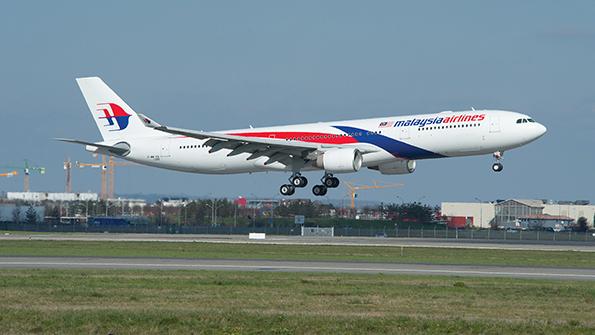
Malaysia Airlines will begin replacing its Airbus A330s in 2024.
Malaysia Airlines is making good progress toward regaining the financial momentum it lost due to the COVID-19 pandemic, allowing the carrier to address more of its fleet replacement needs.
There are clear signs that the group’s most recent round of changes has improved its business outlook. The carrier has demonstrated its confidence by striking deals for Airbus A330neos, and is now considering orders to expand its narrowbody replacement program.
- Carrier’s finances improve, although a net profit is elusive
- Its next round of orders could be MAXs or regional jets
Malaysia Airlines was in a particularly vulnerable position when the pandemic dealt a severe blow to the airline industry in early 2020. The carrier had just been through a major relaunch in an effort to reverse years of financial underperformance.
At that time the airline was taking significant steps toward a return to profitability and an eventual stock market relisting. But the disruption of COVID-19 meant that Malaysia Airlines—along with some other Southeast Asian legacy carriers—had to revise its targets and undertake another restructuring.
This process was completed in about 130 days—which is a relatively rapid time frame, noted airline CEO Izham Ismail. The carrier was able to reset some of its cost base and renegotiate leases and other arrangements.
Benefits from that work are becoming evident. Malaysia Airlines has been achieving a positive cash flow on a daily basis since October 2021, Izham told Aviation Week at the Association of Asia Pacific Airlines annual assembly in Bangkok on Nov. 11. Group revenue is 17% ahead of the level the carrier had budgeted for, and costs are 5% lower than anticipated.
Malaysia Airlines was profitable last year in terms of earnings before interest, tax, depreciation and amortization (Ebitda). The airline is on track to achieve positive Ebitda this year too, Izham said.
Importantly, the group has now built up a healthy cash balance, enough to allow it to survive for 18-24 months if another crisis were to decimate revenue. The financial improvement means Malaysia Airlines has only had to use a portion of the extra funding allocated by state investment agency Khazanah, the airline’s owner.
Of course, the carrier is far from being out of the woods. A further improvement in financial performance is still needed for the airline to achieve a net profit.
Malaysia Airlines’ net profitability prospects “remain stressed” due to fuel price hikes and the depreciation of the Malaysian ringgit, Izham said. The carrier estimates that if its fuel and foreign exchange assumptions in 2021 had held true, it would have achieved a net profit this year.
The carrier’s lack of fuel hedging has not helped in this regard. Malaysia Airlines attempted to secure hedges when its previous arrangements wound down in 2021, but financial institutions had little appetite to participate since the airline was still in the middle of restructuring.
Now, however, the company’s improved situation means it has been able to engage in fuel hedging negotiations. It should be able to enter 2023 with a fuel hedging position, Izham said. It may not be an optimum position, but it will be the best available in the current market environment, he said.
Reestablishing hedging will be important in giving the carrier more planning predictability. With a hedged position, “I can start maneuvering from that rather than [being] completely exposed” to fuel price swings, Izham said.
Rising demand has enabled Malaysia Airlines to rebuild its capacity. The carrier has restored 76% of its systemwide capacity and expects to be at 82% by year-end, Izham said. Domestic capacity is at 100% of 2019 levels, but the lack of China traffic is holding back the international rebound (AW&ST Nov. 21-Dec. 11, p. 33).
Malaysia Airlines is only operating 17% of its pre-pandemic mainland China capacity, Izham said. The carrier estimates its China services will not significantly return until at least the second quarter of next year—and if it occurs earlier it will be a bonus, Izham said.
Passenger yields are high now, but are likely to decline somewhat in the coming months, Izham said. He predicts they will remain above 2019 levels, however.
The airline is due to start its narrowbody renewal in the second quarter of next year when it begins taking delivery of 25 Boeing 737 MAX aircraft. These will start replacing its 44 737-800s, essentially on a one-for-one basis.
Malaysia Airlines plans to be operating 50 narrowbody aircraft within the next 10 years, Izham said. Half of these will be MAXs, and the composition for the other half is being evaluated.
One alternative would be to order more 737 MAXs. However, the carrier is also considering ordering regional jets for the second phase of its narrowbody replacement, Izham said. These smaller aircraft could potentially be used to operate flights to first- and second-tier airports, both domestically and internationally.
Malaysia Airlines is also preparing to update its medium-haul widebody fleet. The carrier announced in August that it had reached deals to take delivery of 20 A330neos beginning in mid-2024, which will replace its current fleet of 21 A330s for passenger service.
The A330neos will arrive with a new cabin design that will become the carrier’s widebody standard, Izham said. The airline also operates six A350s, and these will be updated with the new cabin after the A330neos begin arriving.
Malaysia Airlines has six A380s on its books, but they have been parked and the airline has previously said it will not return them to service. The carrier has reached an agreement for Airbus to take back the A380s, Izham said. They are all due to depart by the end of December.





